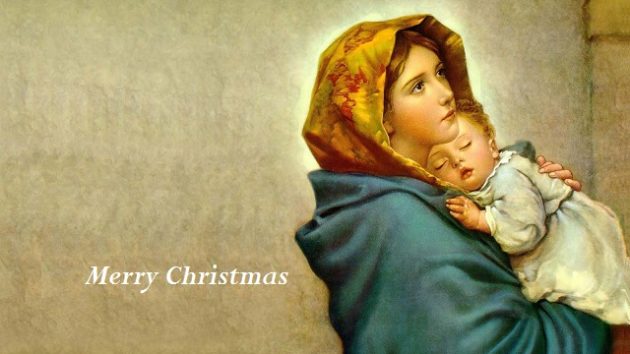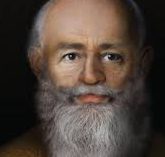Of Santa, Soccer, and Savior: Wishing Readers a Merry Christmas 2016
For my 2016 Christmas post, I feature two entries from the Ligonier Ministries blog. The posts concern two real individuals: Santa Claus and Jesus Christ.
Both entries are written by president of Reformation Bible College Dr. Stephen J. Nichols.
In the first post, Nichols offers some intriguing history about Saint Nick:
Saint Nicholas and the Origins of Santa Claus
It might surprise many today to find out that Saint Nicholas (spoiler alert) is a real person after all. Is he the white-bearded man with a red suit, a cap, and a sleigh?
Not quite, but he probably was bearded, did wear a hat, and did travel in horse-drawn, not reindeer-drawn, transportation. The legend behind Santa Claus is Saint Nicholas, the fourth-century bishop of Myra. His hat was the bishop’s mitre.
Nicholas was born in modern day Turkey to a rather wealthy family. Losing his parents at a young age, Nicholas dedicated both his fortune and his life to the Christian church. Very quickly he was appointed the bishop of Myra, on the southern coast of modern day Turkey.
These were days of persecution for Christians. Roman Emperor Diocletian, who reigned from 284–305, hated Christians and stuffed Roman jails full of them. Bishop Nicholas spent the first few years of the fourth century in jail and faced routine beatings. In the next decade, Constantine legalized Christianity and Nicholas was set free.
As the legend goes, Bishop Nicholas was present at the Church’s First Ecumenical Council at Constantine’s summer palace in Nicea in 325. Hundreds of Bishops gathered there to refute the false views of Arius, a presbyter from Alexandria. Arius denied Christ’s deity. At one point while Arius was addressing the council, Nicholas’s rage got the better of him. According to some of his biographers, Nicholas stood up, crossed the floor to Arius, and promptly punched him in the face.
For the assault, Nicholas found himself back in jail again. The bishops deliberated his fate. Nicholas was repentant and sought forgiveness. After the Council, Constantine granted clemency and restored Bishop Nicholas to his post.
And at his post Bishop Nicholas diligently served. Over the course of his entire life he was known for being extremely generous. He was especially generous to children, regularly giving them gifts. Myra was a busy port city with ships and sailors coming and going. The ships went out of Myra’s port loaded with gifts and goods for the needy, all provided and packed on by Bishop Nicholas. His gifts went all around the Mediterranean world. As sailors went around the world, they took with them the stories of the generosity of Bishop Nicholas.
The year of Bishop Nicholas’s death is uncertain, but the month is firmly believed to be December. As the story of his generosity spread, the stories of his life grew and grew. He was becoming legendary. In the sixth century, a church was dedicated to him and named for him in Constantinople. His image was depicted more in the Middle Ages than any other except those of Christ and of Mary. No longer Bishop Nicholas, now he became Saint Nicholas, and his Feast Day would be December 6.
One of the legends around Nicholas concerned his giving dowries to young poor girls so they would be able to marry. To reflect that legend, images of him carrying bags bulging with gold coins began to appear.
As his legend moved northward, the story takes an even more interesting turn. In Germany, the tradition arose of giving gifts to each other in the name of Saint Nicholas. So, too, in the Netherlands. The Dutch word for him became Sinterklaas. The German word eventually became Santa Claus. These celebrations of gift-giving occurred on December 6, the anniversary of his death. The gift of a gold coin was highly prized and showed great favor.
Even Martin Luther would come to play a role in the legend. Luther wanted a Protestant alternative to the Roman Catholic practice of celebrating the Feast of Saint Nicholas (Santa Claus). Instead of giving gifts in the name of Santa Claus on December 6, Luther started the tradition of giving gifts in the name of the Christ child, Christkindl, on Christmas Eve. Perhaps in this we have an argument for Protestant kids everywhere as to why they should be allowed to open at least one present on Christmas Eve.
Luther loved Christmas. He wanted it to be a celebration of giving around the supreme gift of the babe born of the Virgin Mary in Bethlehem. As he preached in 1530, “He who lies in the virgin’s lap is our Savior … give thanks to God, who so loved you that he gave you a Savior.”
Christmas evolved from the word Christ Mass, the celebration of the incarnation of Christ, fixed by tradition as being on December 25. The word Luther coined, Christkindl, also evolved over the centuries. It would become Santa Claus’ other name, Kris Kringle. This effort of Luther’s to move away from the Santa Claus tradition inadvertently veered right toward it.
So we have the story of Santa Claus. Interestingly enough, Saint Nicholas and his legend began in the early church. The stories wove their way through the Middle Ages, and they even made an appearance at the Reformation. Those stories still live with us today.
My favorite tidbit: Santa Claus spent time in jail for belting a church official as he defended Christ’s deity.
Go, Santa.
In the next post, Nichols takes readers into a moment of peace during war, and beyond:
One of the most remarkable stories of Christmas comes from one of the darkest moments of modern history. World War I ravaged a continent, leaving destruction and debris in its wake. The human cost, well in the millions, staggers us. But from the midst of this dark conflict comes the story of the Christmas Truce of 1914. The Western Front, only a few months into the war, was a deplorable scene of devastation. Perhaps as if to give the combatants one day to breathe again, a truce was called from Christmas Eve through Christmas Day.
As darkness settled over the front like a blanket, the sound of exploding shells and the rat-tat-tat of gunfire faded. Faint carols, in French or English voices on one side and in German voices on the other, rose to fill the silence of the night.
By morning, soldiers, at first hesitantly, began filing out of the maze of trenches into the dreaded and parched soil of No Man’s Land. There was more singing. Gifts of rations and cigarettes were exchanged. Family photos were passed around. Soccer balls appeared. Up and down the Western Front, soldiers, who only hours before had been locked in deathly combat, now faced off in soccer games.
Soccer game during Christmas Truce 1914
For one brief but entirely remarkable day, there was peace on earth. Some have called the Christmas Truce of 1914 “the Miracle on the Western Front.”
Anxious to print some good news, The Times of London reported on the events of the Christmas Truce. Soldiers recorded the day in letters home and in diaries. Some of those lines made it to newspapers, while others remained unknown until later brought to light. Here’s one such line from the diary of a German infantryman:
The English brought a soccer ball from the trenches, and pretty soon a lively game ensued. How marvelously wonderful, yet how strange it was. The English officers felt the same way about it. Thus Christmas, the celebration of Love, managed to bring mortal enemies together as friends for a time.
“Friends for a time,” “the celebration of love,” “peace on earth”—this is the meaning of Christmas. But these celebrations, these truces, don’t last. After Christmas Day, the soccer balls and the soldiers went back into the trenches. The Christmas carols subsided and the war carried on. And even though World War I eventually ended, a few decades later, Europe’s countryside and cities became the field of battle once again, as did Africa and the Pacific, during World War II.
Events like the Christmas Truce are worth celebrating. But they lack something. They lack permanence. Such impermanent peace is what we often find in our quest for the real meaning of Christmas. If we are looking for permanent and ultimate goodwill, love, and peace, we must look beyond our gift-giving, get-togethers, and office parties. We must look to no other place than to a manger.
We must look to a baby born not with fanfare, pomp, and circumstance, but to poor parents in desperate times. Joseph and Mary, and the Baby Jesus for that matter, were real historical figures. But in a way, Joseph and Mary extend beyond themselves, beyond their particular place and time. They represent all of us. We are all poor and living in desperate times. Some of us are better than others at camouflaging it. Nevertheless, we are all poor and desperate, so we all need the promise bound up in that baby.
We are in need of a way out of our poverty of soul and the desperate state of our human condition. We find it in this child lying in a manger, who was and is Jesus Christ, the long-promised Messiah, Seed, Redeemer, and King.
The birth of Jesus so many centuries ago might have been a slightly-out-of-the-ordinary birth. Even in ancient times, stalls didn’t typically double as birthing rooms and mangers didn’t typically double as cribs for new-born babies. And that newborn baby was very much out of the ordinary. Of course, in some respects, He was perfectly ordinary. He was a human being, a baby. He got hungry. He got thirsty. He got tired. When He was born, He was wrapped in swaddling clothes—the ancient equivalent of Pampers.
An infant. Helpless, hungry, cold, and tired.
Yet, this child was the Son of God incarnate. He was Immanuel, which translated means “God with us.” According to the Apostle Paul’s account, this infant created all things. This infant created His own manger. And this infant, this King, brings peace on earth, ultimate and permanent peace.
May the peace o f Christ find permanent residence in your hearts.
f Christ find permanent residence in your hearts.
Merry Christmas to all.




Leave a Reply
Want to join the discussion?Feel free to contribute!